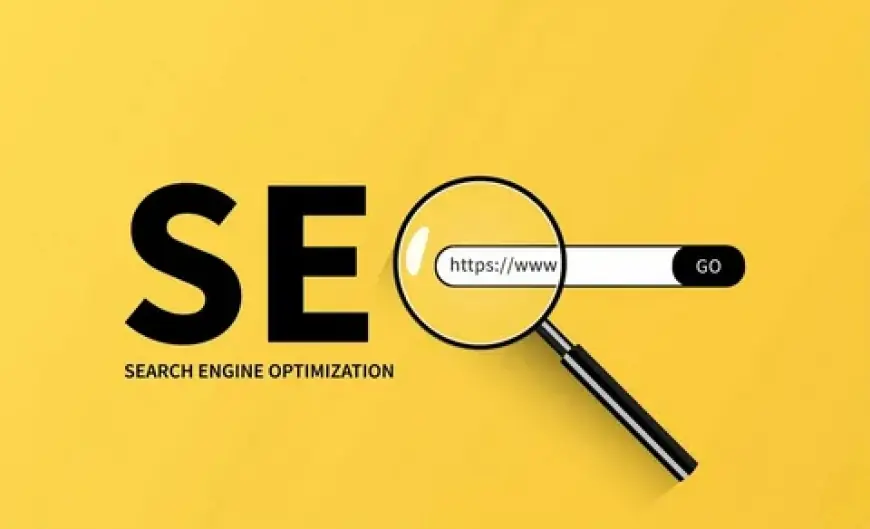Understanding Search Intent: A Key to Ranking
Understanding search intent is crucial for SEO. Learn how to align strategy, improve SEO ROI, and rank smarter in competitive markets.

Search engines have come a long way from simply matching keywords. Today, if you want to stand out online, especially in a competitive market, understanding search intent is not just a bonus, it’s essential. Businesses that tailor their content and SEO efforts to meet user expectations based on intent are the ones that succeed.
Nouman Naeem, a leading SEO Consultant, has seen firsthand how businesses can dramatically improve visibility by aligning their digital strategies with the real motivations behind search queries. Rather than just stuffing content with keywords, the goal is now to anticipate what the user truly wants, and deliver it fast.
In fact, Nouman offers specialized SEO services in multiple industries. Whether it’s carpet cleaning SEO services, dental clinics, counseling practices, or local service providers, each client gets a tailored strategy. This means paying close attention to the unique intent behind their customers’ searches and optimizing their sites accordingly. Every industry has different goals, and the SEO approach must reflect that.
What is Search Intent?
Search intent, or user intent, refers to the reason behind a user's query on a search engine. There are four main types:
-
Informational: The user wants to learn something (e.g., “how to remove coffee stains from carpet”)
-
Navigational: The user is looking for a specific website or page
-
Transactional: The user intends to make a purchase or complete an action (e.g., “book carpet cleaning near me”)
-
Commercial investigation: The user is researching before making a purchase (e.g., “best carpet cleaning services in Chicago”)
If your content does not match the intent of the keyword, it won’t rank—no matter how optimized your page is.
Why It Matters for SEO in 2025
Google is increasingly prioritizing relevance and user satisfaction. The algorithm is smarter and more user-focused than ever before. Pages that truly solve the user’s problem or answer their question will rank higher.
For example, if you are targeting the keyword “affordable dental services,” your landing page needs to provide pricing, appointment availability, and trust signals, not just generic text. This means on-page SEO services need to go beyond basic optimization and truly support the user's journey.
Crawl Prioritization: Making Sure Google Sees the Right Pages
Understanding search intent is only part of the equation. You also need to ensure Google can access and prioritize your best content. This is where crawl prioritization becomes critical.
If your most valuable and intent-matching pages are buried deep within your site or not properly linked, Google might not crawl or index them efficiently. Regular technical audits and sitemap optimization can help ensure that your site structure supports crawl efficiency, especially for important landing pages targeting high-conversion keywords.
Matching Content Types to Intent
The best SEO strategies for 2025 involve matching the content format to the intent behind each query. For example:
-
Informational intent: Blog posts, how-to guides, FAQs
-
Transactional intent: Product pages, service landing pages, booking forms
-
Commercial investigation: Comparison articles, case studies, testimonials
-
Navigational intent: Homepages, contact pages, branded landing pages
By categorizing your keywords and aligning them with specific content types, you’ll not only boost engagement but also improve the accuracy and effectiveness of your SEO report data.
Measuring SEO ROI Through Intent-Driven Pages
Every piece of content you create should serve a specific purpose. Measuring SEO ROI starts with tracking performance based on intent fulfillment. Are your transactional pages leading to conversions? Are your blog posts keeping users on-site longer or directing them toward service pages?
Proper tracking through Google Analytics, conversion pixels, and call tracking allows you to tie user behavior back to search intent and make informed decisions moving forward. When you're offering something as specific as carpet cleaning SEO services, understanding the intent behind queries like “emergency stain removal near me” helps you structure both the page and the call-to-action more effectively.
The Power of Backlinks That Support Intent
Links from external sites are still one of the strongest ranking signals. But not all backlinks are created equal. In 2025, Google places more value on types of backlink that are relevant to your industry and user needs.
If you’re in the carpet cleaning space, a backlink from a home improvement blog that discusses stain prevention is far more powerful than a random directory listing. Intent-focused backlink building means you seek out sites and sources that your audience already trusts—and where your presence makes logical sense.
On-Page SEO Services for Intent Matching
Great on-page SEO services in 2025 don’t just tweak meta titles and headers. They create synergy between layout, content, and the intent of the visitor. Here are a few key elements:
-
Use clear, user-focused headings that reflect what people are actually searching
-
Include visuals, videos, or tools that help the user take the next step
-
Optimize internal linking to guide users to related high-value pages
-
Feature real customer reviews and FAQs to address hesitations and build trust
For businesses like dentists or therapists, it’s essential to offer immediate information about services, insurance, and appointments right where the user expects it.
Tailored SEO for Local and Niche Industries
Industry-focused SEO is more than keyword targeting. It's about understanding the local landscape, user behavior, and the unique challenges each field faces. Whether you're targeting the top of the funnel for an informational blog or the bottom with a transactional service page, search intent must guide your approach.
SEO consultants who understand your niche can help you see results faster by creating optimized pathways for each user type. Whether it’s carpet cleaning SEO services, counseling, or dentistry, success begins with relevance.
Conclusion
As the SEO landscape grows more sophisticated in 2025, aligning your digital strategy with search intent is the single most impactful way to improve visibility, engagement, and conversions. It ensures that every visitor finds exactly what they’re looking for and encourages search engines to reward your site for relevance and user satisfaction.
By focusing on smart crawl prioritization, building the right types of backlink, improving on-page SEO services, and tracking success through an intent-aligned SEO report, you’re setting yourself up for lasting results.
And if you’re looking to maximize your efforts across industries like carpet cleaning, dental care, or therapy practices, partnering with a knowledgeable consultant like Nouman Naeem can help you achieve sustainable growth with strategies that put user intent at the core.
What's Your Reaction?
 Like
0
Like
0
 Dislike
0
Dislike
0
 Love
0
Love
0
 Funny
0
Funny
0
 Angry
0
Angry
0
 Sad
0
Sad
0
 Wow
0
Wow
0


















































